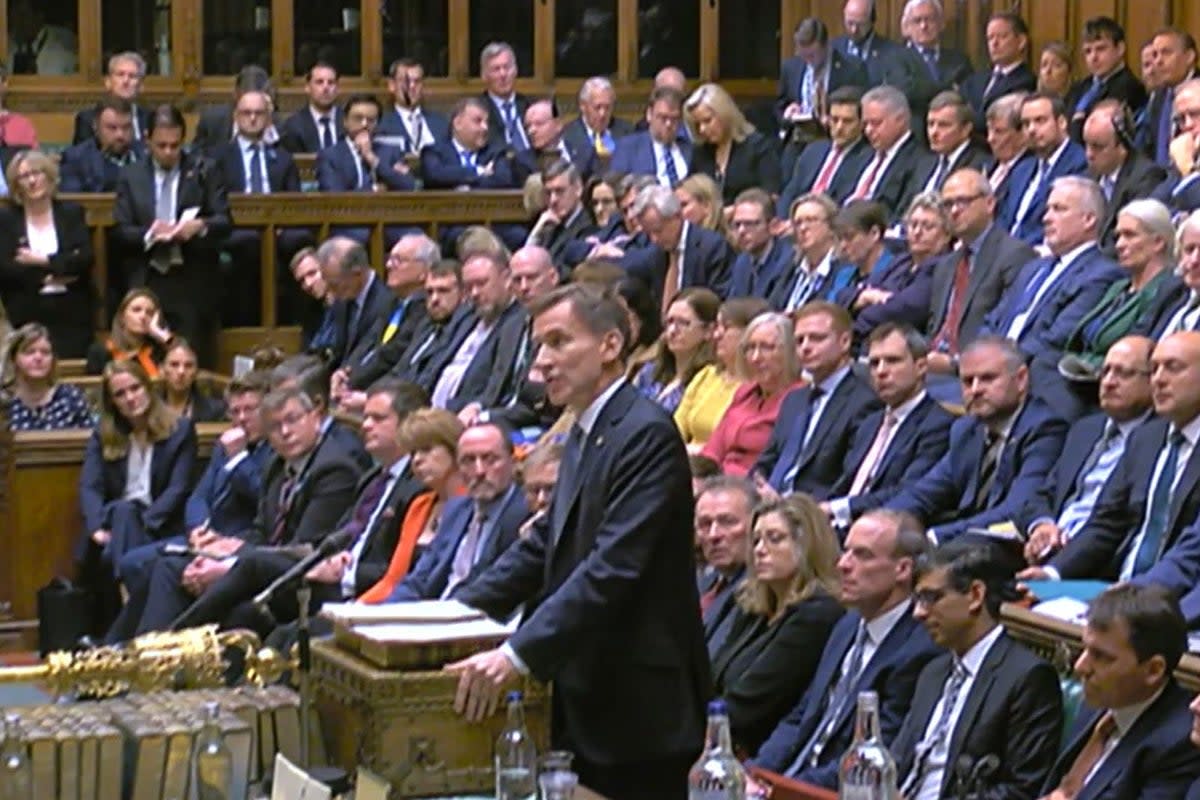Living standards to plummet over next two years, warns OBR with tax burden highest since WW2

Living standards are set to plummet at a record rate over the next two years as galloping inflation hugely outstrips wages and tax thresholds are frozen, according to the Office for Budget Responsibility (OBR).
The Government’s independent fiscal watchdog said in its latest outlook document published after Jeremy Hunt’s Autumn Statement that real household disposable income per person will drop by more than seven per cent by 2024 wiping out a decade’s worth of gains.
The fall will be 4.3 per cent in the current financial year - the biggest single year drop since records began in 1956 - followed by 2.8 per cent in 2023/24, the second biggest annual fall.
It will be only the third time in history disposable incomes have fallen in real terms in two consecutive years -the most recent precedent being aftermath of the global financial crisis, according to the OBR.
There could also be 500,000 job losses nationwide with the tax burden reaching its highest level since the Second World War.
The decline, which comes despite £100 billion of Government support, will also drag living standards back down to 2013/14 levels. Current levels will be not be recovered for another six years.
The falls would be even bigger without the costly Government measures such as the energy price guarantee, according to the OBR.
In his speech the Chancellor said the UK was already in a recession, which will last just over a year “ with a peak-to trough fall in output of 2.1 per cent.” GDP is expected to fall 1.4 per cent next year before starting to recover in 2024. Output will not return to pre-pandemic levels until the fourth quarter of that year.
Inflation is estimated to have peaked in October at 11.1 per cent before falling away next year. The deficit will be £177 billion, or 7.1 per cent of GDP, this year, before falling to £140 billion, or 5.5 per cent of GDP, next year
The tax burden rises from 33.1 per cent of GDP in 2019-20 to 37.1 per cent of GDP by 2027/28, a full percentage point higher than forecast by the OBR in March and its “highest sustained level since the Second World War.”
Despite cuts in departmental budgets, total public spending also rises – from 39.3 per cent of GDP in 2019-20 to 43.4 per cent of GDP in 2027-28 . That is almost three percentage points higher than predicted in March, “reflecting higher debt interest and welfare spending raising cash spending, and the energy-shock-driven smaller economy.”
Higher borrowing has the effect of pushing underlying underlying public debt up sharply, from 84.3 per cent of GDP last year to a 63-year high of 97.6 per cent in 2025-26. March 2022 forecast.
The gloomy outlook for the UK economy pushed the pound down a cent and a half as investors looked under the lid of the forecasts.
Mike Owens, senior sales trader at trading platform Saxo UK, said: “In reaction to the UK’s Autumn Statement we’ve initially seen bond yields move higher and sterling sell off as the OBR’s new UK GDP forecast for 2023 was updated to minus 1.4%, which is a hefty revision from plus 1.8% previously.
“The broad take is that both gilts and the pound have staged a meaningful recovery in the first few weeks of the Sunak government. Today’s announcement of the Autumn Statement, which is fiscally prudent but nevertheless paints a bleak picture of the state of the UK economy, gives markets an excuse to take a little bit off the table.”

 Yahoo News
Yahoo News 
